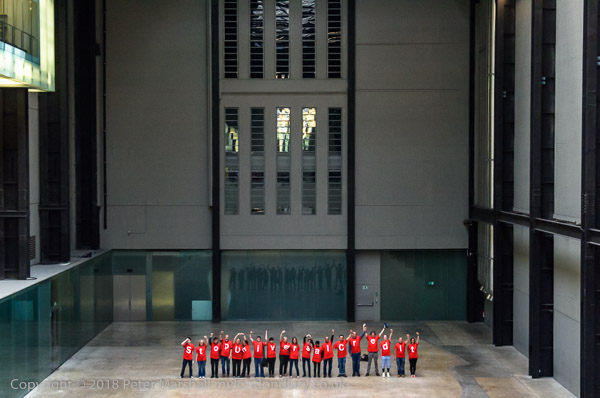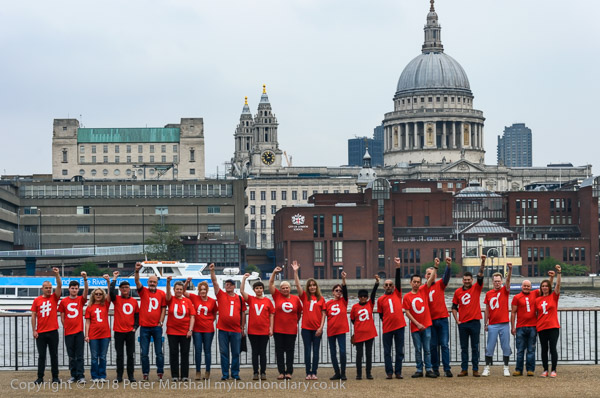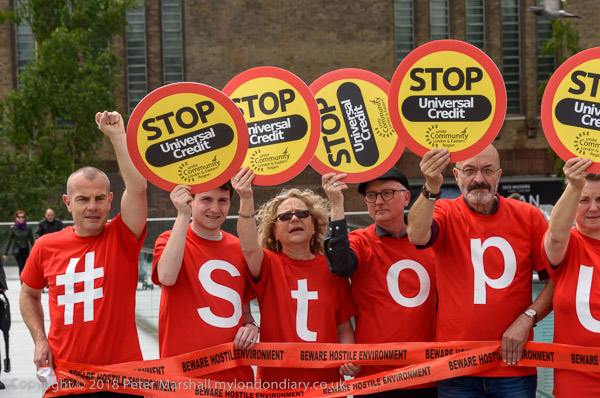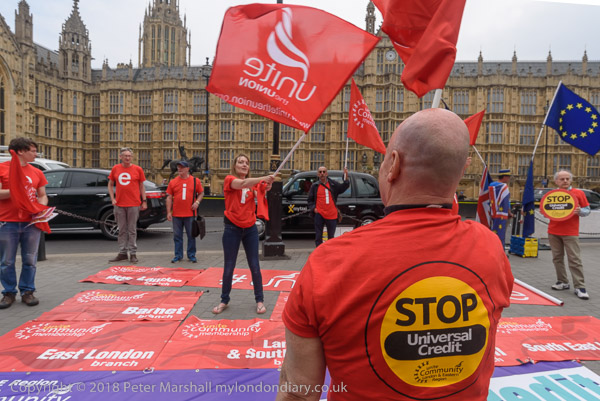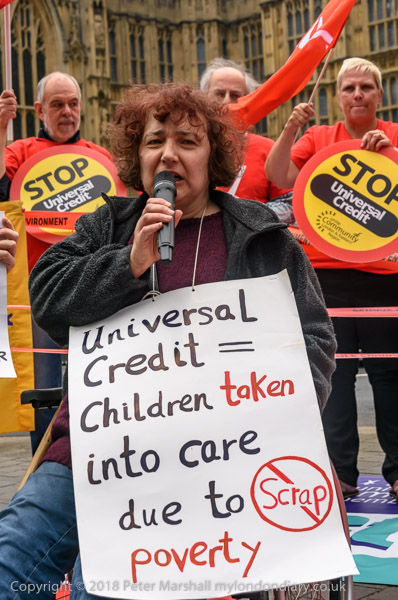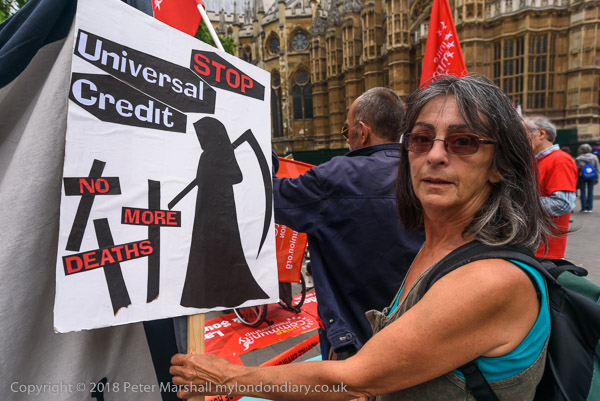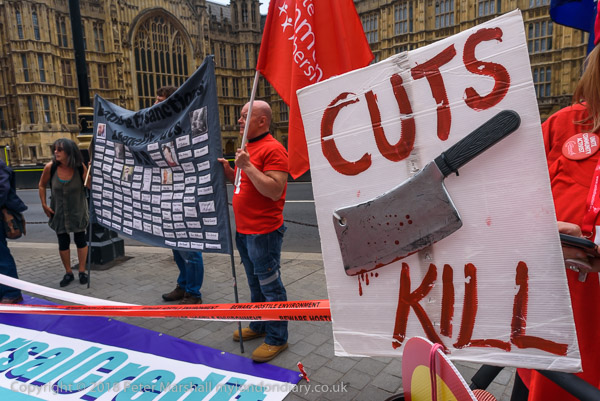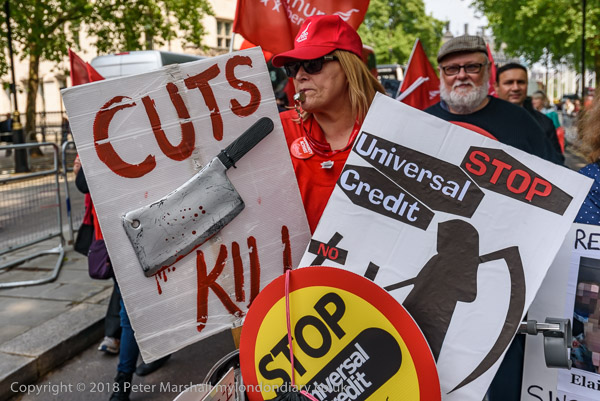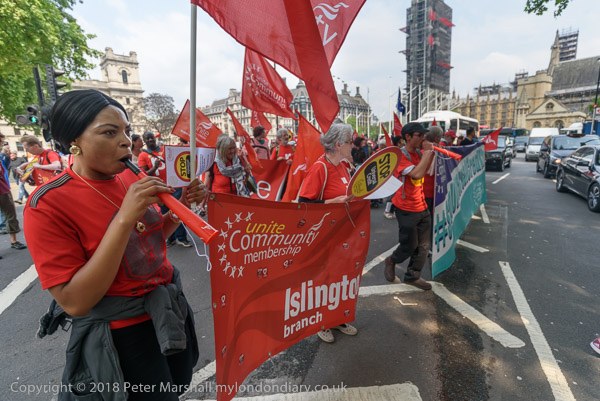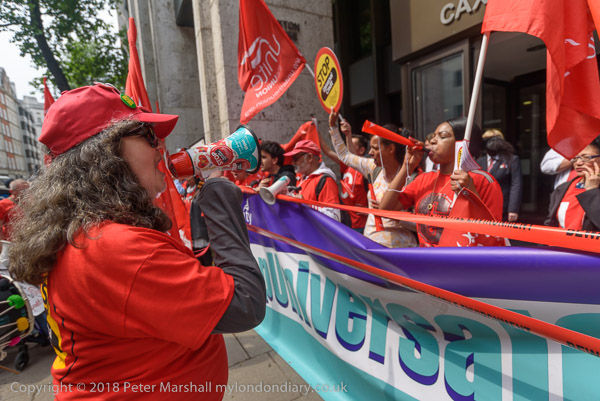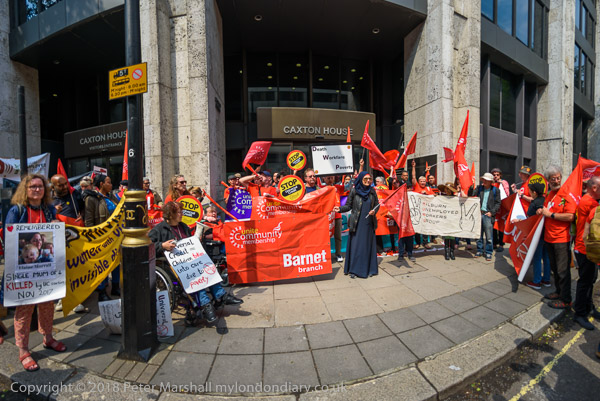Workers, May Day March & Police Party: May 1st is of course May Day, International Workers’ Day, and I will be at Clerkenwell for the annual May Day march in London, and perhaps some other events to celebrate the day. For Catholics it is also dedicated to Saint Joseph the Worker, the husband of Mary, the mother of Jesus and approopriately in 2006 my day started outside Westminster Cathedral with the launch of the London Citizens Workers’ Association. Here is what I posted back on May Day in 2006 – with the usual corrections and links to more pictures on My London Diary.
London Citizens Workers’ Association – Westminster Cathedral
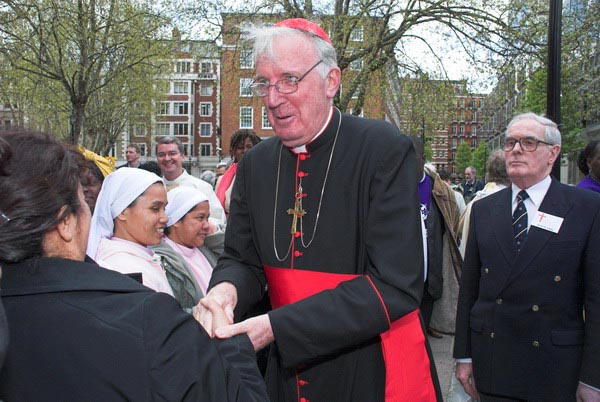
May 1st saw the launch of the London Citizens Workers’ Association, a new organisation to support low-wage and migrant workers across London, backed by faith organisations, trade unions and social justice organisations. May 1 is the feast of St Joseph the Worker and the event began with a procession into the cathedral and a ‘Mass For Workers’, but I didn’t bother to get up in time for that.
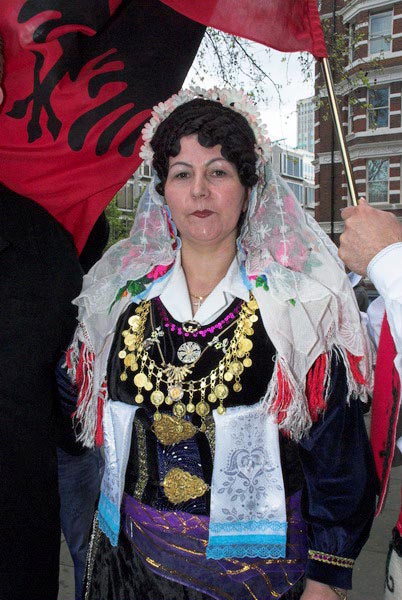
After the mass was a ‘Living Wage rally’ outside the cathedral, with speakers including Cardinal Cormac Murphy O’Connor (then leader of the Catholic Church in England & Wales), Sir Iqbal Sacranie (Secretary General, Muslim Council of Britain), and Jack Dromey (General Secretary of the TGWU) along with representatives of other unions and faiths, and of the new association.
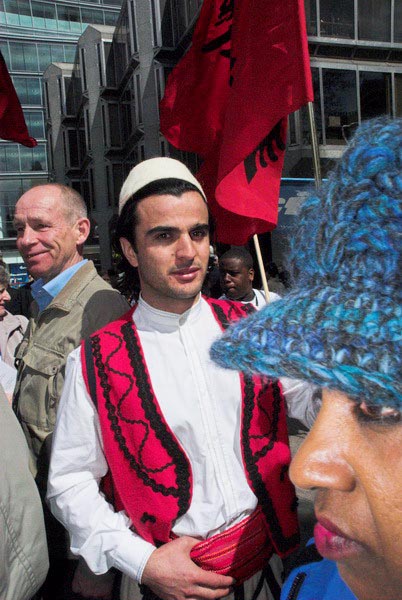
The association aims to fight a campaign for a living wage for low paid workers as well as training them to organise and campaign and providing free advice on rights at work and legal support. Workers in low paid jobs often also lack decent working conditions and there was in 2006 little trade union representation*. It will also provide english classes.
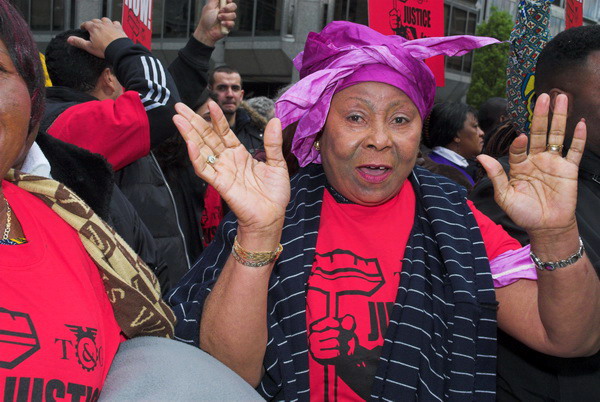
Several large employers who have already taken steps to improve conditions were awarded ‘Living Wage Employers awards’ at the rally, but I didn’t wait around for this.
more pictures
[* Since 2006 we have seen the rise of several grass roots trade unions taking a strong stance for the rights of low paid workers, particularly migrant workers, including the United Voices of the World and the Independent Workers’ Union of Great Britain.]
London May Day March – Clerkenwell
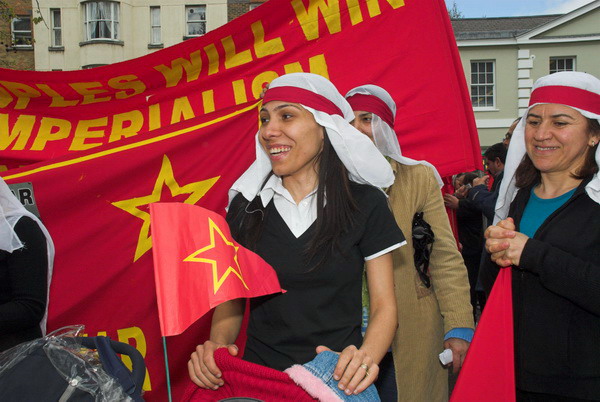
Around half of London’s tube network seemed to be down for planned engineering works, and getting around was a bit like playing Mornington Crescent to some very special rules. But the Victoria Line and Thameslink got me to Farringdon well before the start of the annual May Day parade.
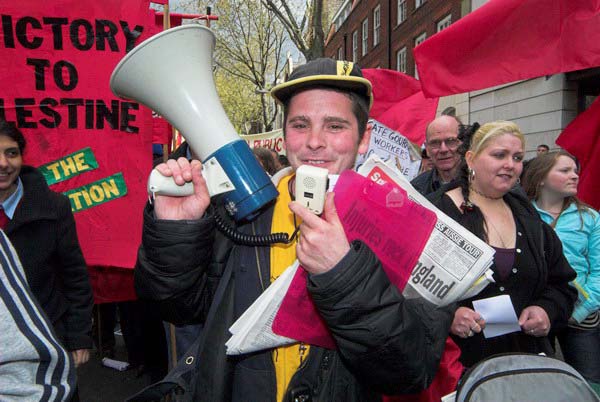
This seemed larger than in previous years, with a few more trade unions there, with particularly strong support from the RMT, but many others also took part, including my own – the NUJ (and there were many of us members covering the event as well.)
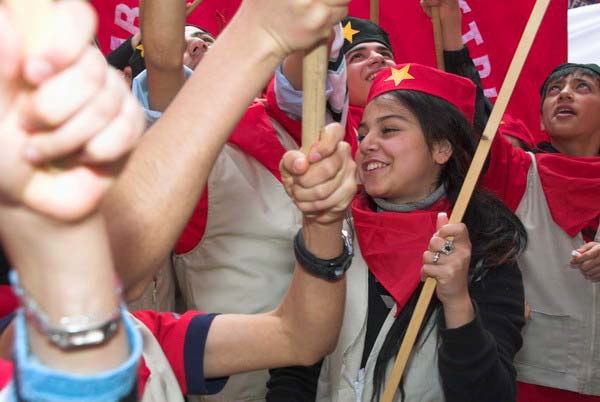
As usual, the most colourful aspect of the march was provided by the various Turkish communist parties, with strong youth wings. MKLP (and its KGO youth), the DHKC, the TIKB, the TKP/ML and probably more. There were some powerful reminders of the repression in Turkey in the portraits of some of those who have died in terrorist actions or death fasts.
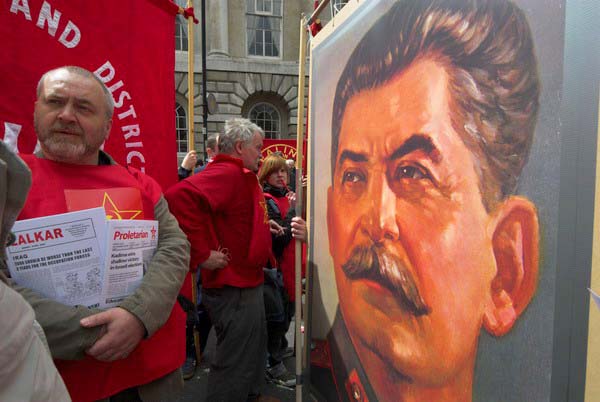
Movements in a number of other countries were also represented, including Iraq, Iran Greece and Sri Lanka as well as the Kurds. Also taking part was the African Liberation Support Campaign Network.

Gate Gourmet strikers marching behind their banner chanted “Tony Woodley – out out!” denouncing the attempts of the TGWU to force them to sign the compromise agreement which waives their rights to further work or legal redress. Others demanded that Remploy factories be kept open. There were protests over the Dexion and Samuel Jones pension outrages, and other causes.
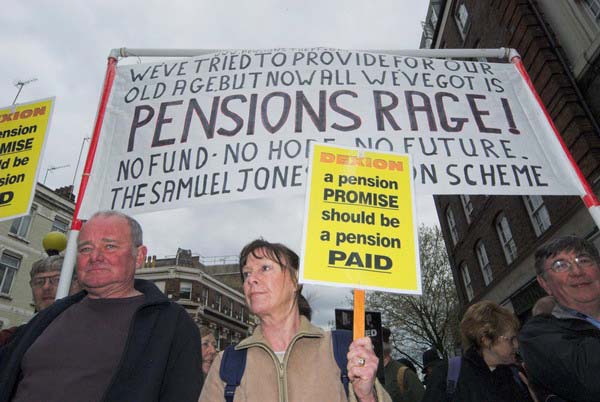
More or less bringing up the rear of the march were around 500-1000 in the Autonomous Bloc, an anti-capitalist grouping marching against ‘precarity’, the working environment of late capitalism.

Increasingly there is a polarisation of the employment market in our service-based economies, characterised at one end by poor conditions, lack of job security, temporary employment, use of migrant labour at one extreme, and at the other by increasing encroachment of work into the private lives of more highly paid employees, making them into company property in exchange for their security.

In contrast to the relatively low-profile police presence for the rest of the event, this bloc was flanked on both sides by a line of uniformed police. Many of the marchers in this section wore scarves covering the lower half of their faces, and some carried anarchist flags. Leading the block were a number of bicycles, and a pedal powered sound system.
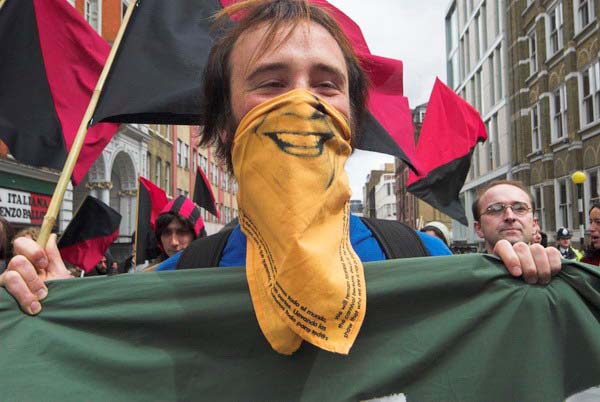
The march continued on its way to Trafalgar Square, where people stood around mainly looking pretty bored. I didn’t catch much of the speeches but if what I heard was typical I could understand why.
Autonomous Bloc in Trafalgar Square
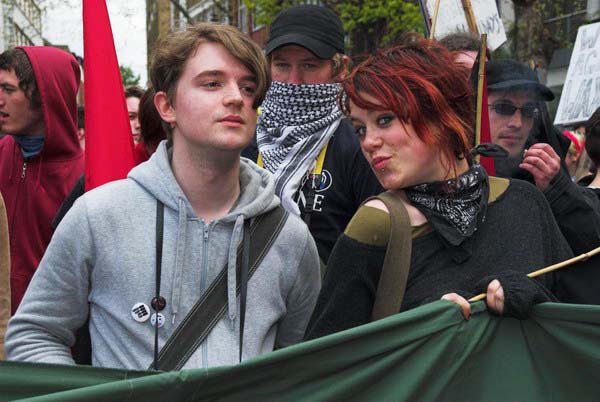
When the Autonomous Bloc arrived at the square, the police barred their entry on the grounds of public order and seized the sound system. More than half those marching left at this point, with the police making little attempt to stop individuals who wandered into the square.
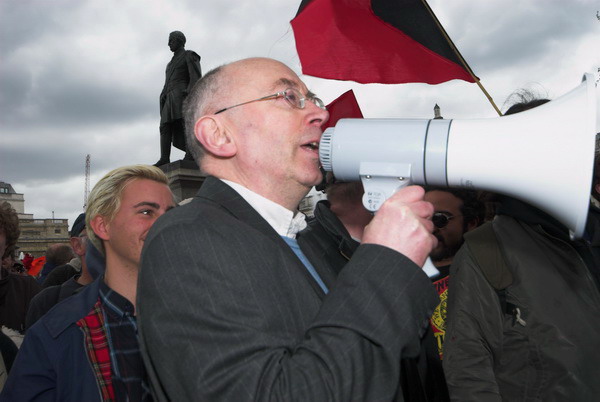
The rest of the bloc stayed on the road, with a few short speeches over a loud hailer, then moved up the side of the square towards the national gallery, where there was another short meeting. This was interrupted by the news that the police tactical support group was on its way, and they soon surrounded the relatively small group who had decided to stay.
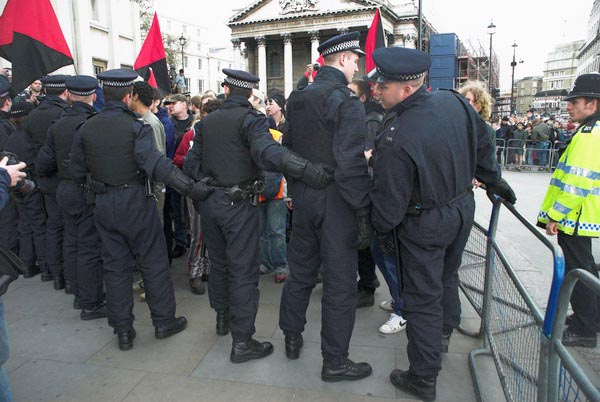
I walked through the police line at this point, and they seemed to be making little attempt to stop anyone leaving, or at least didn’t detain them for more than a few minutes.
Pictures from the autonomous bloc on the main march here, but there are more pictures from Trafalgar Square here.
Space Hijackers Police Victory Party – Bank
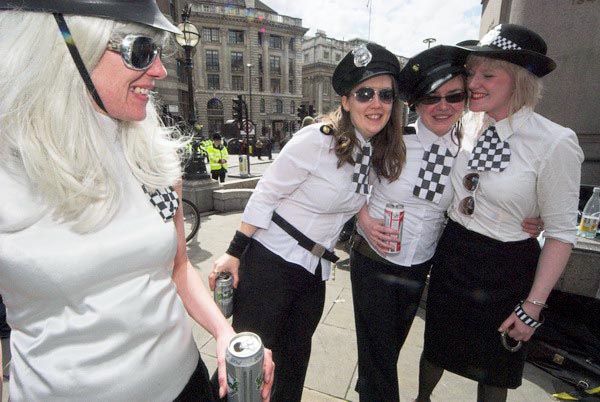
While the marchers were walking to Trafalgar Square, I took what was left of the tube to Bank and the ‘Police Victory Party‘ organised on their behalf by the Space Hijackers.

There I watched Tony Blair and some rather more attractive than usual police (and with pink fluffy hand-cuffs) being watched by some other police. A couple of the latter walked away when asked if they would mind being photographed, but some others seemed to be rather amused by the proceedings.

Of course, the police (both lots) were taking lots of pictures of the events too, and I can imagine some of them causing amusement at section house parties.

There was a ‘pin the blame on the anarchist’ game, a pinata (ta for the mini Mars bar) and some dancing before I had to rush off to make the gig at Trafalgar Square. Where the politics were perhaps less serious.
Flickr – Facebook – My London Diary – Hull Photos – Lea Valley – Paris
London’s Industrial Heritage – London Photos
All photographs on this page are copyright © Peter Marshall.
Contact me to buy prints or licence to reproduce.
